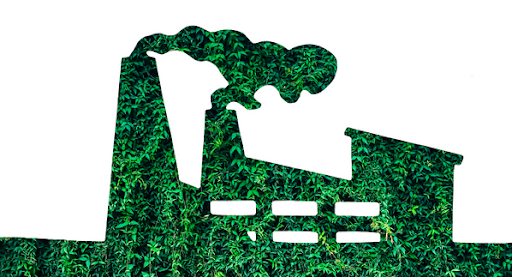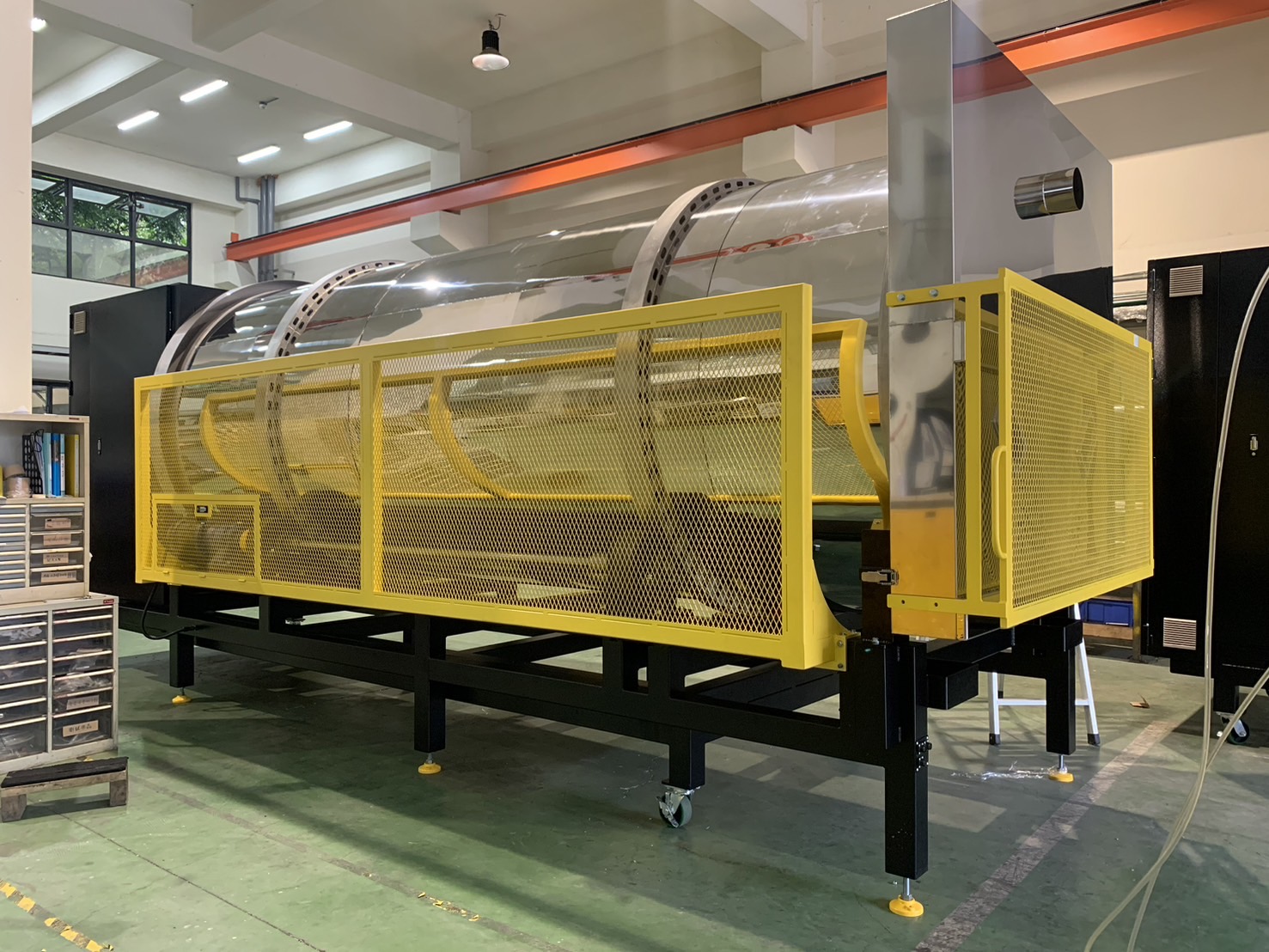PET Processing Unveiled: The Role of Infrared Rotary Dryer in Crystallization and Sustainability
- 2024.02.07
 Flying Tiger
Flying Tiger
Crystallization and drying are critical processes in PET preform and flake processing, as they directly impact the quality, efficiency, and sustainability of the end product. Traditional drying methods are often time-consuming, and inefficient, and can lead to inconsistent results. Nevertheless, emerging innovative solutions, such as Flying Tiger's infrared rotary dryers, offer precise, uniform, and sustainable drying and crystallization of polymers that meet the stringent quality requirements of the industry.
In this article, we will explore the crucial role of crystallization and drying in PET processing and unveil the science and sustainable impact of infrared rotary dryer technology in PET processing. We will delve into how infrared rotary dryers can improve the efficiency, consistency, and quality of PET processing while reducing material waste and energy consumption.
Crystalline vs. Amorphous PET Explained
PET (Polyethylene Terephthalate) polymer is widely used in various applications such as packaging, textiles, and engineering plastics.
Amorphous PET is characterized by its randomly ordered molecular structure, which gives it flexibility and transparency. Furthermore, since it is also non-hygroscopic, it does not absorb moisture, thus, making it ideal for packaging applications.
Meanwhile, Crystalline PET has an ordered molecular structure and sharp melting points. This gives it high mechanical strength and stiffness, making it suitable for engineering plastics, textiles, and other applications where durability is required.
On the other hand, infrared rotary dryers play a crucial role in PET processing as they allow for efficient drying and crystallization. This is important as both types of PET require different processing conditions to obtain the desired properties.
With infrared technology, the dryer can precisely control the temperature and moisture levels, ensuring optimal conditions for both types of PET. Furthermore, infrared technology is highly energy-efficient, which leads to reduced material waste and overall sustainability in the PET processing industry.
Recycled PET material (rPET) is also becoming increasingly popular in the industry as it offers a more sustainable solution to traditional PET. rPET material can be produced by recycling PET flakes, which are melted and extruded into new products. The use of rPET helps to reduce waste and carbon emissions, making it an environmentally friendly option.
Spotlight on Infrared Rotary Dryer
Flying Tiger's infrared rotary dryer is a groundbreaking solution for PET processing, offering simultaneous drying and crystallization in one efficient and sustainable package. The system utilizes infrared radiation energy to heat the bulk material of the polymer flake, which directly causes internal heating and molecular oscillation. The technology is suited for the drying of both hygroscopic and non-hygroscopic materials, particularly reprocessed PET.
Infrared drying systems offer dramatic improvements in energy efficiency. Energy consumption for PET recrystallization and drying to final moisture contents of less than 0.005% is claimed to be 72-120 W/kg, much lower than that achieved with traditional drying methods, making this technology suitable for high-volume throughput.
Indeed, the Infrared Rotary Dryer is a novel solution in PET processing that combines crystallization and drying while dramatically reducing both process times and energy consumption. With the implementation of direct moisture measurement of the polymer, significant energy use reductions in PET drying are possible, resulting in further cost savings for processors.
The Spectrum of PET Processing
In the spectrum of PET processing, from virgin to regrind, the implementation of infrared (IR) rotary dryer technology has proven to be a valuable asset across various forms of PET, including blow-molded and thermoformed PET.
Infrared drying utilizes the energy from IR radiation to directly heat the bulk material, resulting in internal heating and molecular oscillation, which effectively heats the bulk material of the granule and any internal moisture. This then leads to simultaneous drying and crystallization, ensuring consistent and precise results.
This technology is particularly suited to the drying of reprocessed PET, which is amorphous and must be recrystallized before it can be processed again. Historically, a separate recrystallization process was used prior to drying and processing, but with IR drying, the PET is raised above its glass transition temperature (Tg) and continuously agitated during the process, effectively combining recrystallization and drying in one pass.
Championing Sustainability
As sustainability becomes an increasingly important issue in the industry, it is critical for manufacturers to adopt technologies that enable them to reduce their environmental impact while still increasing efficiency. In this regard, Infrared (IR) rotary dryers have emerged as a key player in the realm of PET processing, offering improvements in both efficiency and sustainability.
By eliminating the need for a separate recrystallization process and reducing drying times, IR rotary dryers provide significant energy savings and help to align PET processing operations with modern sustainability goals. The MOBY process, which uses an IR + vacuum system, also provides a cleaning action that improves the quality of reprocessed PET for direct processing, making it suitable for food applications.
Furthermore, the overall environmental footprint is reduced as the IR technology uses less energy and allows for the use of recycled PET material (rPET), reducing waste and promoting a circular economy. Additionally, with more efficient drying and processing, there is less risk of material degradation or discoloration which are common issues with traditional drying methods, resulting in less material waste overall.
Industry Recognition and Validation
Infrared technology has been gaining increased recognition in the manufacturing industry for its potential to enhance the efficiency of production lines. Specifically, recent studies have demonstrated that the use of infrared radiation can significantly accelerate both the crystallization and drying processes of polyethylene terephthalate (PET) plastics.
An article published by Plastics Technology, a leading platform for industry news and analysis, corroborates these findings, confirming that infrared technology can indeed serve as a highly effective means for achieving faster and more energy-efficient PET processing. By applying targeted infrared radiation to PET pellets during the crystallization stage, PET manufacturers can achieve more uniform and rapid cooling, resulting in a more homogeneous and higher-quality final product. Moreover, the efficiency gains associated with infrared technology can reduce energy consumption by up to 50%, alongside shorter processing times.

Aligning with Modern Sustainability Goals
In recent years, sustainability has become a key concern for many industries, particularly in the plastics industry, where the negative impact on the environment has been widely documented. Traditionally, PET regrind required a separate recrystallization process prior to drying and processing. Now, the adoption of Infrared Rotary Dryer technology in PET processing offers a sustainable solution to reduce energy consumption and improve efficiency, while also promoting the use of recycled materials and reducing overall waste.
With the Infrared Rotary Dryer, it combines recrystallization and drying in one pass, eliminating the need for separate processes. The use of IR heaters, coupled with vacuum technology, allows for the removal of water from the material, improving the process efficiency and reducing energy use.
The reduction in energy consumption achieved through the adoption of Infrared Rotary Dryer technology aligns with modern sustainability goals, promoting an environmentally responsible approach to PET processing. Additionally, the increased efficiency of the drying process results in significant cost savings for businesses, making this technology a sustainable and economical option for manufacturers in the plastics industry.
Final Thoughts
The processing of PET has historically been challenging in terms of sustainability and energy efficiency due to the significant energy consumption of traditional drying methods, and the additional complexity the recrystallization process introduces for recycled PET. The introduction of infrared drying technology has significantly transformed PET processing, providing a sustainable and energy-efficient solution.
The Infrared Rotary Dryer, with its union of energy efficiency, improved processing times, and sustainability benefits, has proven to be a notable advancement in PET processing. Its ability to merge the recrystallization and drying processes into a single step not only enhances efficiency but also aligns with modern sustainability goals.
As manufacturers continue to prioritize sustainability, the adoption of Infrared Rotary Dryer technology is expected to increase, establishing it as a key player in promoting sustainable practices in the plastics industry. It is evident that adopting Infrared Rotary Dryers will not only benefit businesses but also contribute towards a more sustainable future, presenting a win-win solution for all.
To achieve a more sustainable and efficient approach to PET processing, it is crucial for manufacturers to reconsider their conventional drying methods and explore the benefits of Infrared Rotary Dryer technology. If you are seeking a more sustainable solution for PET processing, contact us to learn more about how Infrared Rotary Dryers can benefit your business and help reduce your environmental footprint. Together, we can work towards a more sustainable future for the plastics industry. By embracing this innovative technology, we can make a positive impact on our planet.
Back






